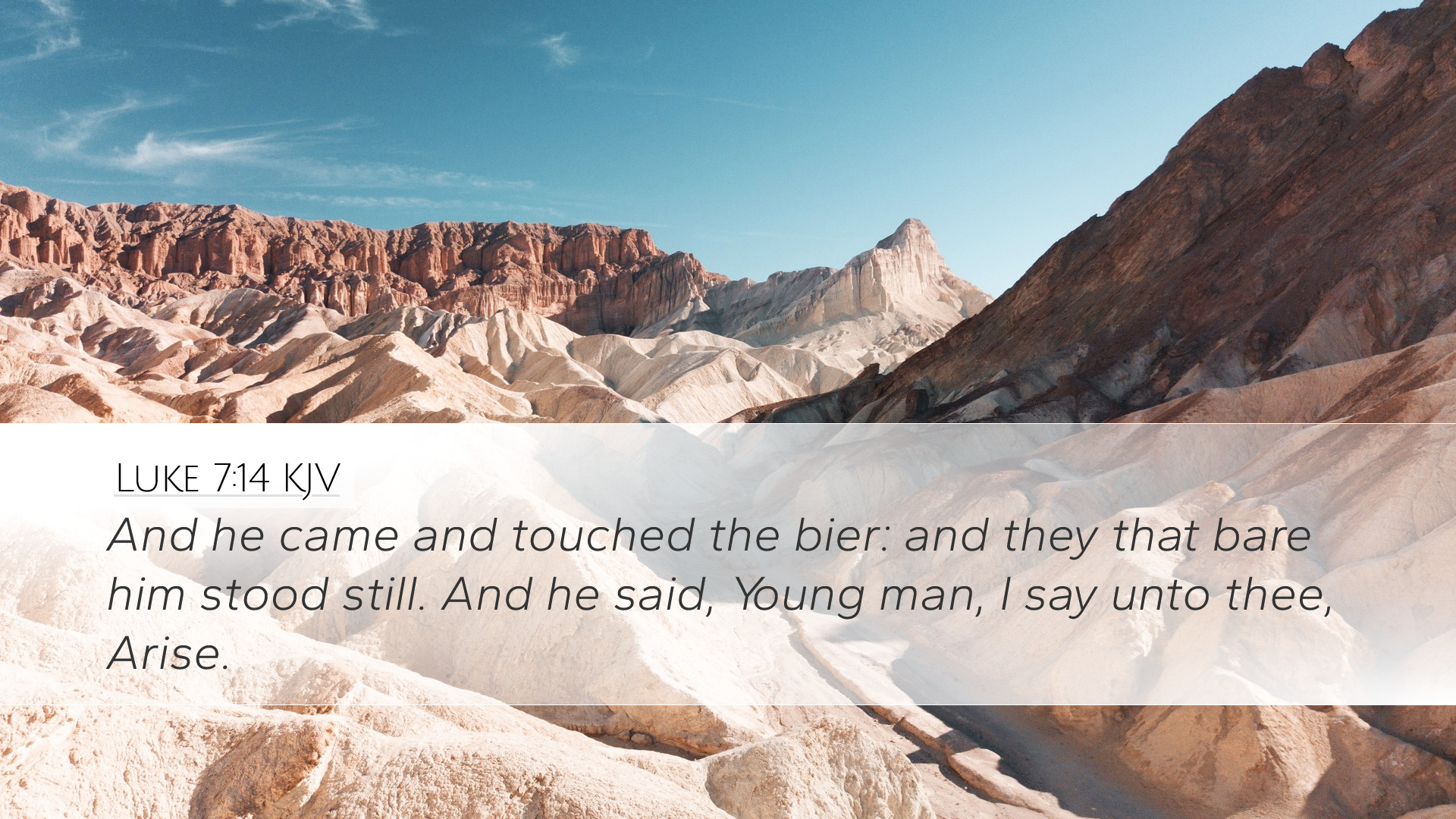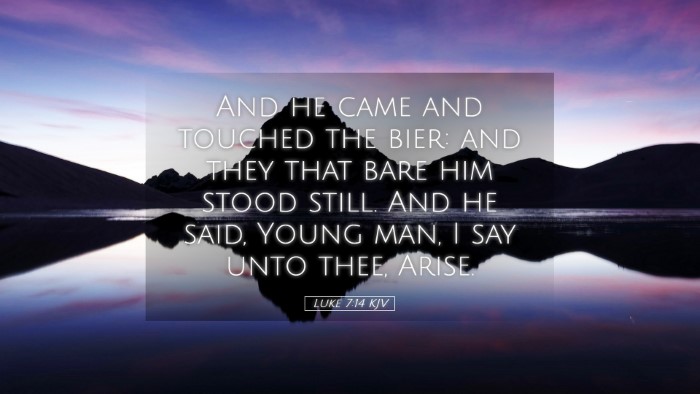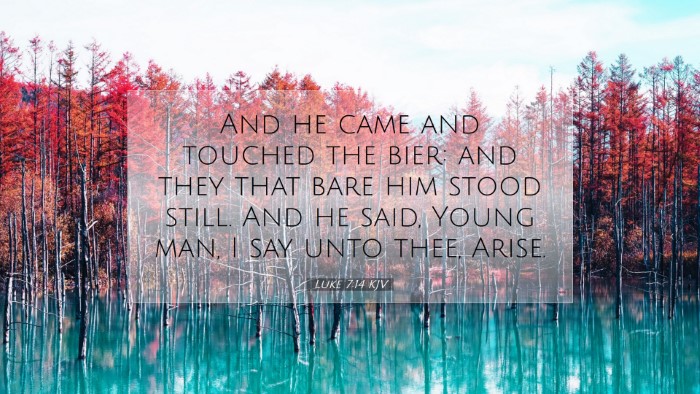Commentary on Luke 7:14
In Luke 7:14, we encounter a powerful moment in the ministry of Jesus:
"And he came and touched the bier: and they that bare him stood still. And he said, Young man, I say unto thee, Arise."
This passage is rich with theological significance and reveals profound insights into the character of Christ, His authority over death, and His compassion for humanity.
Context and Background
This event occurs during a period of significant teaching and miraculous activity in Jesus' ministry. Luke, a physician and theologian, meticulously bridges Jesus’ earthly mission with Old Testament prophecy, fulfilling the expectation of the Messiah as one who brings healing and restoration.
- Setting: The miracle takes place in the town of Nain, a small village significant for its biblical history and proximity to the prominent cities of Jesus' ministry.
- Characters: The central figures include Jesus, the widow, the dead young man, and the mourning crowd. Each character provides insight into the themes of grief, hope, and resurrection.
Theological Implications
The act of Jesus touching the bier is critical; it emphasizes His willingness to engage with death and mourning, which was traditionally viewed as defilement.
This action reflects His compassion and authority, offering a stark contrast to the cultural norms of the time.
1. Jesus’ Authority Over Death
Both Matthew Henry and Albert Barnes underscore that Jesus' command, "Young man, I say unto thee, Arise," reveals His divine authority over life and death.
This moment serves as a demonstration of Jesus as the Resurrection and the Life, Evoking the power that echoes through the entirety of Scripture, showcasing that death is not an obstacle for the divine.
2. Compassion and Empathy
As Adam Clarke notes, the encounter occurs immediately after Jesus witnessed the widow's deep grief. His heart moved with compassion,
He intervenes, indicating that Christ is deeply aware of human suffering and intercedes in moments of profound loss.
This divine empathy invites believers to understand the nature of God’s heart towards their pain.
3. Restoration of Hope
The resurrection of the young man represents not only a physical restoration but also a spiritual hope for the widow and the community.
Matthew Henry emphasizes that in Jesus, there is always a hope for restoration, sometimes in this life and ultimately in the life to come.
The crowd’s reaction, filled with awe and glorification, echoes this theme as an affirmation of their faith in Jesus as the Messiah.
Practical Applications
For pastors, students, and theologians, this passage invites reflection on several key life and faith applications:
-
Empathy in Ministry: Like Jesus, we are called to engage with those who grieve and suffer, extending compassion that reflects the heart of God.
-
Proclaiming Hope: The miracle serves as a reminder to share the hope of resurrection and restoration found in Christ, not just in physical terms but spiritually as well.
-
Understanding Authority: Reflecting on the authority of Jesus empowers believers to trust Him in all aspects of life, especially in facing death and despair.
Conclusion
Luke 7:14 provides a profound glimpse into the ministry of Jesus, accentuating His authority, compassion, and the hope He brings to humanity.
By drawing from the insights of Matthew Henry, Albert Barnes, and Adam Clarke, we can appreciate the rich theological implications
embedded in this moment of restoration. The interplay between grief and hope serves as a vital reminder of the character of Christ,
inspiring us to embrace His heart as we minister in today's world.


